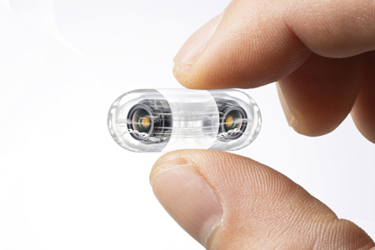Robotic Tech's Opportunities To Revolutionize Surgery
By Todd Wilson, M.D., chief medical officer, EndoQuest Robotics

While there have been important advances in the use of robotic technologies in healthcare for more than a century, widespread adoption of robotics to support a range of medical and surgical needs started to expand rapidly in the mid-1980s. Many industry insiders cite the first use of the PUMA 560 robotic surgical arm to perform a non-laparoscopic neurosurgical biopsy as a landmark event that represents the dawn of the modern age in robotic surgery. Since that time, innovation in robotic technology has continued to progress rapidly, with applications across many different indications including general surgery and colon, spinal, gynecologic, and urologic surgeries.
Benefits Of Minimally Invasive Robotic Surgery To Surgeons And Patients
The reasons for the rapid and continually expanding adoption of surgical robotics that enable minimally invasive surgery are well known. These technologies allow surgeons to perform many procedures and access target surgical sites through only a few small incisions in the body compared to traditional “open body” surgery that can result in much higher levels of trauma to healthy tissue and visible scarring. Some surgical robotics can now achieve levels of precision, flexibility, and mobility that are not possible with a human touch alone, especially in hard-to-access areas of the body. Robotic technologies are also supported by sophisticated cameras that can provide magnified, high-definition views of a surgical area and, more recently, 3D imaging that is far superior to the naked eye.
Based on these advantages, minimally invasive robotic surgery is now considered the gold standard for many forms of surgery. These technologies make it possible to access different sites in the body in ways that are safer and shown to provide better outcomes for patients. Advanced materials and manufacturing capabilities are producing robotic instruments that are small and flexible enough to reach even hard-to-access sites. In recent years, surgeons and advanced endoscopists have also developed strategies to use flexible robotic instruments to perform many procedures via the natural endoluminal cavities in the body, including the mouth, rectum, and vagina. Known as endoluminal surgery, this approach enables surgeons to perform different procedures without having to cut through healthy tissue, significantly reducing scar tissue and wound repair stress.
Substantial data collected since the 1980s confirm that minimally invasive robotic surgery can provide a wide range of benefits for patients, including less pain during recovery, lower risk of infection, reduced blood loss, and shorter hospital stays compared to traditional approaches. While minimally invasive robotic surgery is well documented, resulting in optimal clinical outcomes for patients, it is primarily used only at medical centers that can afford the technology and necessary staff training. But it is encouraging to see that the number of hospitals and outpatient centers offering these options continues to expand rapidly as patient demand grows. In addition, new technologies are also supporting broader opportunities in remote minimally invasive robotic surgery, with the potential to expand access to millions of new patients in the future. As a result, the robotic surgery market is expected to surpass $7 billion by 2025.1
Applying Advanced Strategies In Robotic Surgery
As researchers and leaders in medical technology innovation have continued to explore new approaches in minimally invasive robotic surgery, they have led advances in several key areas including development of miniature robots, applications of machine learning, advanced data analytics, and new approaches in visualization technology. The following is an overview of advances currently being developed in robotic surgery innovation that can drive new levels of safety and patient benefits:
Endoluminal robotic surgery: Many surgeons have explored the use of endoluminal surgery, where they target sites via natural cavities or orifices of the body. While options in endoluminal robotic surgery have historically been limited because larger and less flexible instruments could only be used one at a time in a procedure, recently the technology has advanced to make it possible for physicians to use up to three specially engineered surgical tools simultaneously. Researchers are now testing these advanced technologies for endoluminal surgery in a range of upper and lower gastrointestinal indications, with the potential for future applications in a broader range of clinical procedures.
In vivo robots: Miniature in vivo surgical robots can allow surgeons to image surgical sites from many angles inside the body for better visualization. The technology is designed to provide additional viewpoints and unconstrained manipulators that can help improve safety and reduce patient trauma. They can also be engineered to play an active role in execution of some surgical procedures. Options include both fixed-base and mobile in vivo robots for use in a range of procedures including cholecystectomy, prostatectomy, and nephrectomy.
Capsule robots: Miniaturized endoscopes known as capsule robots can play a central role in supporting some surgical procedures as well as in diagnostic testing and targeted drug delivery. They are generally smaller than a traditional drug capsule, which can help reduce the risk of tissue trauma and allow for faster accessibility. They are comprised of biocompatible cases and electronic circuitry that can be used to capture and transmit images and perform testing such as in vivo body temperature detection and pH monitoring.
Microbots: Ranging in size from a millimeter down to a few microns, microbots can reach many target destinations in the body to support diagnosis and real-time monitoring of disease progression with access through the circulatory system. Some examples of potential applications include measuring glucose levels in a person with diabetes, delivering therapies directly to tumor sites, or helping to perform delicate surgeries in the eye or even in the brain.
Surgical robotics using machine learning: Researchers are also exploring the use of many new machine learning applications to improve the performance of surgical robotics in minimally invasive procedures. With machine learning, surgical technologies will one day monitor, record, and predict patient outcomes by evaluating data and recognizing patterns. This information can then be used to identify and confirm optimal strategies to reduce risk and improve outcomes in many different surgical procedures, in some cases in real time.
Opportunities to apply these and other important advances in robotic technology to a broader range of minimally invasive surgeries are likely to reach new levels of momentum in the years ahead. Physicians will have access to more robotic technologies to deliver even higher levels of insight, precision, and control while patients can undergo minimally invasive procedures with increased confidence about the potential risks and benefits, including reduced trauma, faster recovery, and, in many cases, no visible scars. To make these benefits a reality, medical device companies must be positioned to offer comprehensive training and support related to new robotic technologies that can enable physicians and healthcare facilities to rapidly and effectively adopt them. With those elements in place, it is likely that the applications of robotic technologies in surgery will grow exponentially in the years ahead.
Reference
- iData Research (2019, March 21). Robotic Surgery Market Expected to More than Double to $7 billion by 2025- New Study by iData Research. https://www.businesswire.com/news/home/20190321005201/en/Robotic-Surgery-Market-Expected-to-More-than-Double-to-7-billion-by-2025-%E2%80%93-New-Study-by-iData-Research.
About The Author:
 Todd Wilson, M.D., earned his Doctor of Medicine degree and completed his residency at The University of Texas Medical School at Houston Texas Medical Center. He earned his B.S. in chemistry from the United States Naval Academy. He is certified by the American Board of Surgery and is currently an attending surgeon and medical director at Surgical Innovation and Robotic Institute at Memorial Hermann Hospital – Texas Medical Center. He has served as lead author or co-author on more than 65 peer-reviewed publications and has presented at many global medical meetings focused on robotic surgery.
Todd Wilson, M.D., earned his Doctor of Medicine degree and completed his residency at The University of Texas Medical School at Houston Texas Medical Center. He earned his B.S. in chemistry from the United States Naval Academy. He is certified by the American Board of Surgery and is currently an attending surgeon and medical director at Surgical Innovation and Robotic Institute at Memorial Hermann Hospital – Texas Medical Center. He has served as lead author or co-author on more than 65 peer-reviewed publications and has presented at many global medical meetings focused on robotic surgery.
